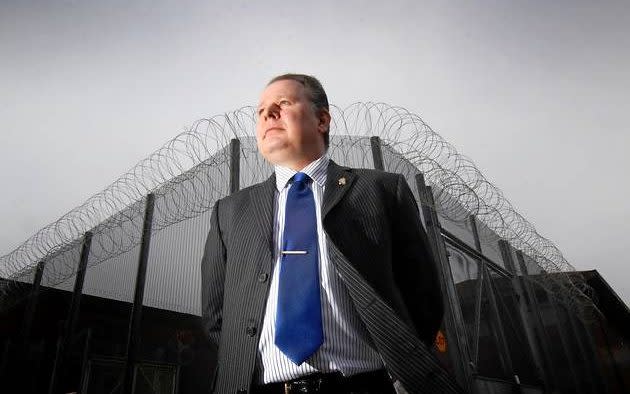To solve rising violence inside, UK prisons need old-style warders with jailcraft
This week’s industrial action by the Prison Officers Association (POA) is ostensibly borne out of official figures which reveal a disturbing rise in prison violence. Assaults are up a third and attacks on staff have increased by more than 40 per cent in the past year. This is rightly the subject of urgent examination.
There is no doubting the damage these attacks cause to confidence and morale. In light of this, it might not seem unreasonable for prison officers to withdraw their labour, but the Government was right to demand an end to the walkout. A strike betrays a long history of responsible commitment among prison officers to the security of our prisons and the prisoners in their care. Neither does industrial action protect staff, as prisoners who have been locked up during a walkout are more prone to exercise their frustration once unlocked the next day.
The debate about prison violence had already, before this week’s action, become a false trade-off between stability and staff numbers, and is now in danger of becoming an old-fashioned pay and conditions dispute. We owe it to those in custody and the wider public to ensure discussions fully account for the complexity of the custody model in this country.
Rather than use coercive control in British prisons, an environment of mutual respect between prisoners and staff underpins a more subtle notion of imprisonment “by consent”
The UK has never been particularly reliant on coercive control to manage prisons. Everyone working in the system recognises that there is no way on a prison wing of 100 prisoners that three, four or even eight prison officers could possibly maintain coercive control.
Instead, an environment of mutual respect between prisoners and staff underpins a more subtle notion of imprisonment “by consent”. This is obviously questioned from time to time as personalities change. Although this can lead to instability, a state of dynamic equilibrium reasserts itself as resources are redirected or experience developed.
The rise in new synthetic drugs and concerns about staff numbers have highlighted that the fragile consensus is now becoming harder to maintain; just as on the outside, values that support it such as respect for authority, for institutions and for each other are under threat. At the same time, the demographic of prison officers is changing. What used to be a job for life, with employees able to build trust through knowledge and the application of acquired “jailcraft”, is giving way to a more inexperienced workforce with higher turnover.
Stability and staff retention has also suffered through the abolition of roles. The senior officer – akin to a non-commissioned officer in the Army – is a position many prisons have disbanded, but it was pivotal in resolving conflicts before they escalated. Flatter management structures have reduced promotion opportunities, exacerbating turnover.
The mainstay “prison officer” role has been devalued; other more detached professionals exercise a greater influence on the terms and conditions of a prisoner’s sentence. This disconnect between frontline staff and the interventions and programmes that prepare prisoners for release undermines stability.
It is vital that prison officers are more than turnkeys. They should have a greater say in sentence plans in a way which strengthens prisoner relationships, and contributes to the professionalisation of officers who want to create positive change. Governors also need the freedom to lead effectively, and moves to give them greater control over important areas of everyday prison life are welcome. This will surely bring more innovation.
The vast majority of prisoners want to serve their time without incident and our response to the trend in violence should not be to limit rights or take away hope that they will one day be released. Much has been written about the impact of indeterminate sentences, particularly for prisoners who have shown a genuine willingness to change.
For their part, prison officers who do tremendous work in challenging circumstances every day are fundamentally motivated to make a difference to the lives of the people they look after. Our response to prisoner violence should go beyond a simple debate about numbers and consider how hope can be regenerated in jails, both among prisoners and those charged with their care.
Jerry Petherick has worked in the UK prison sector for 33 years and is Managing Director for G4S custody and detention services

 Yahoo News
Yahoo News 




